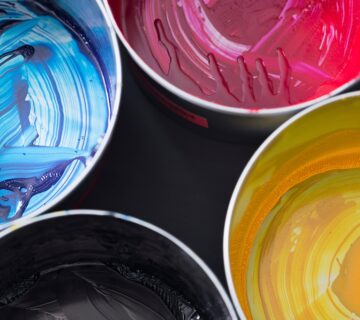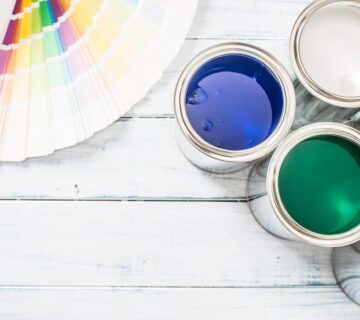When it comes to house painting, homeowners often face the dilemma of choosing between high-quality, more expensive paint and cheaper alternatives. While high-quality paint might seem like a significant upfront investment, it offers substantial long-term cost benefits. This blog delves into the reasons why investing in high-quality paint is economically advantageous in the long run, looking beyond the initial price tag to the broader financial picture. The choice of paint can affect not only the appearance of your home but also the frequency and cost of maintenance required in the future. Understanding these implications can help homeowners make an informed decision that balances cost with quality.
Durability and Longevity
High-quality paint tends to have better durability compared to lower-grade alternatives. It’s formulated to withstand wear and tear, resist fading, and maintain its appearance over time. This durability means that walls painted with high-quality paint will require less frequent touch-ups and repainting. In the long term, the initial higher cost can be offset by the reduced frequency of repainting, which translates to savings in both time and money. Additionally, the consistent performance of high-quality paint ensures that your home looks fresher for longer periods, reducing the need for premature renovations.
Better Coverage and Efficiency
One of the key benefits of high-quality paint is its superior coverage. Higher-end paints usually contain more pigments and binders, allowing for better coverage with fewer coats. This can be particularly cost-effective when covering dark colors or painting over surfaces with imperfections. Fewer coats not only save on the amount of paint used but also reduce labor costs if you’re hiring professional painters. Moreover, the need for fewer coats means that the painting project can be completed more quickly, further reducing the costs associated with prolonged labor.
Time and Labor Savings
The ease and efficiency of application associated with high-quality paint can lead to significant savings in time and labor, especially for DIY painters. High-quality paint is generally easier to apply, flows more smoothly, and is more forgiving of errors. This can translate into faster completion of the project and less time spent on corrections or touch-ups, a significant advantage for those painting their own homes. The reduced effort and frustration during the application process are invaluable for DIY enthusiasts. These efficiencies make the painting experience more enjoyable and less daunting, encouraging homeowners to maintain their paintwork more regularly.
Enhanced Aesthetic Value
The aesthetic appeal of high-quality paint is undeniable. It often results in a more elegant finish, with richer colors and more consistent sheen. This visual appeal can enhance the overall look and feel of your home, contributing to its aesthetic value. In the context of property value, a well-painted home using high-quality paint can make a positive impression on potential buyers, potentially increasing resale value. The superior finish and lasting beauty also contribute to a home’s curb appeal, making it stand out in the neighborhood.
Reduced Environmental Impact
High-quality paints often have lower levels of volatile organic compounds (VOCs), making them a more environmentally friendly option. While the direct cost benefit might not be immediately apparent, the reduced environmental impact contributes to better indoor air quality and overall health. Consequently, future medical costs associated with exposure to harmful chemicals will likely be reduced. Choosing eco-friendly paints also reflects a commitment to sustainability, a factor increasingly important to many consumers today. This choice can enhance the comfort and safety of the living environment, appealing to a broader range of buyers if resale is considered.
Maintenance and Cleaning
High-quality paint typically has better washability and resistance to stains and marks. This ease of cleaning means walls will maintain their appearance longer, reducing the need for repainting due to staining or discoloration. In high-traffic areas or homes with children and pets, this can be a significant long-term benefit. The resilience of high-quality paint to everyday wear and tear also means that the walls will look well-maintained with minimal effort, saving both time and money on cleaning supplies and additional paint jobs.
Final Thoughts
While high-quality paint may come with a higher price tag upfront, its long-term cost benefits are clear. Durability, better coverage, time and labor savings, aesthetic value, environmental impact, and ease of maintenance are all factors that contribute to the overall cost-effectiveness of high-quality paint. Considering these benefits, investing in high-quality paint is not only a choice for superior aesthetics but also a wise financial decision in the long run. The investment in quality paint can ultimately lead to substantial savings, enhanced living quality, and increased property value, making it an economically sound decision for any homeowner. For more insights into home improvement and painting, visit our website at sisupainting.com and check out our blog at sisupainting.com/blog.





No comment